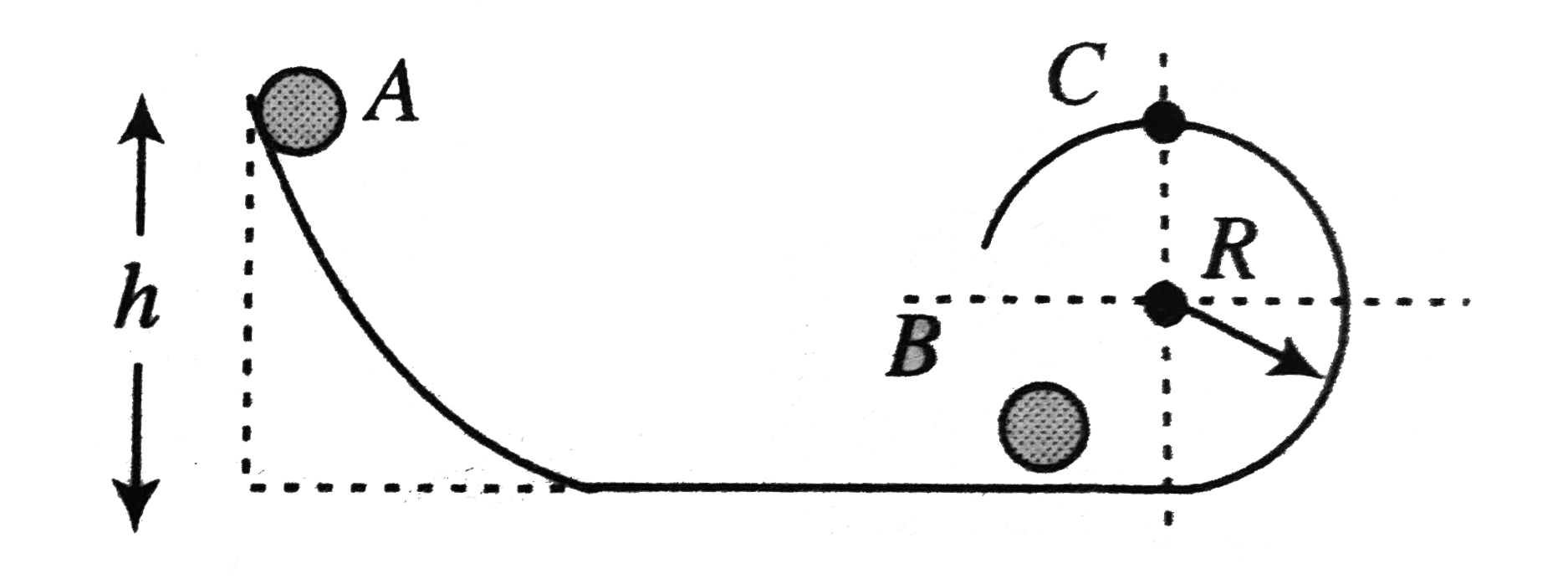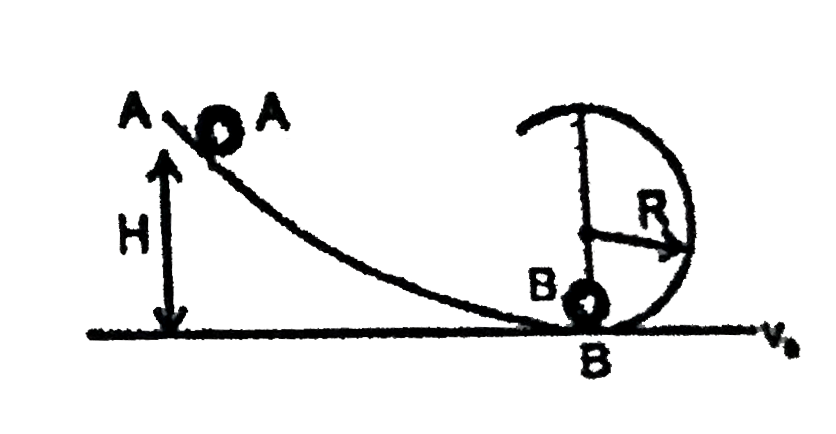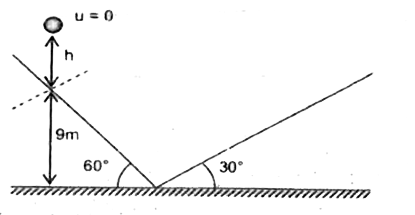Ball A of mass m, after sliding from an inclined plane, strikes elastically another ball B of same mass at rest. Find the minimum heihgt h so that ball B just completes the circular motion of the surface at C. (All surfaces are smooth).

H=3R
H=2R
H=4R
The correct Answer is:C
For the just completing the circular motion, minimum velocity at bottom in
Energy conservation b/w point A and B

Topper's Solved these Questions
Similar Questions
A ball of mass M collides elastically with another stationary ball of mass m. If M>m, find the maximum angle of deflection of M.
View SolutionA ball is dropped from a height h on a inclined plane, ball collides elastically with the first plane. Find the value of 'h' (in meter) so that it strikes perpendicular on the second inclined plane.

View Solution
Knowledge Check
Find the minimum height h so that ball just completes the circular motion on the surface when it is released from rest as shown in the diagram (All surfaces are smooth)
 Ah=52RBh = 2RCh=25RDh = 3R
Ah=52RBh = 2RCh=25RDh = 3RA ball of mass m1 moving with a certain speed collides elastically with another ball of mass m2 kept at rest . If the first ball starts moving in reversed direction after the impact then
Am1=m2Bm1>m2Cm1<m2DNone of theseA ball of mass m moving with a constant velocity strikes against a ball of same mass at rest. If e= coefficient of restitution, then what will the the ratio of the velocities of the two balls after collision?
A1−e1+eBe−1e+1C1+e1−eD2+ee−1
A ball of mass m moving with vel. V strikes head on elastically with a number of balls of same mass at rest in a line. Only one ball from other side moves with same velocity. Explain wy not two balls move simultaneously, each with ve. v/2 ?
View SolutionA ball of mass 100g moving at a speed of 12 m s−1 strikes another ball of mass 200 g at rest. After the collision both the balls move with a common velocity. Find the common velocity.
View SolutionA ball of mass 100g moving at a speed of 12 m s−1 strikes another ball of mass 200 g at rest. After the collision both the balls move with a common velocity. Find the common velocity.
View SolutionA ball of mass 4 kg moving on a smooth horizontal surface makes an elastic collision with another ball of mass m at rest in the line of motion of first ball. If after collision first ball moves in the same direction with one fourth of its velocity before collision, then mass of second ball is
View SolutionA ball of mass m moving with a velocity v undergoes an oblique elastic collision with another ball of the same mass m but at rest. After the collision if the two balls move with the same speeds , the angle between their directions of motion will be:
View Solution